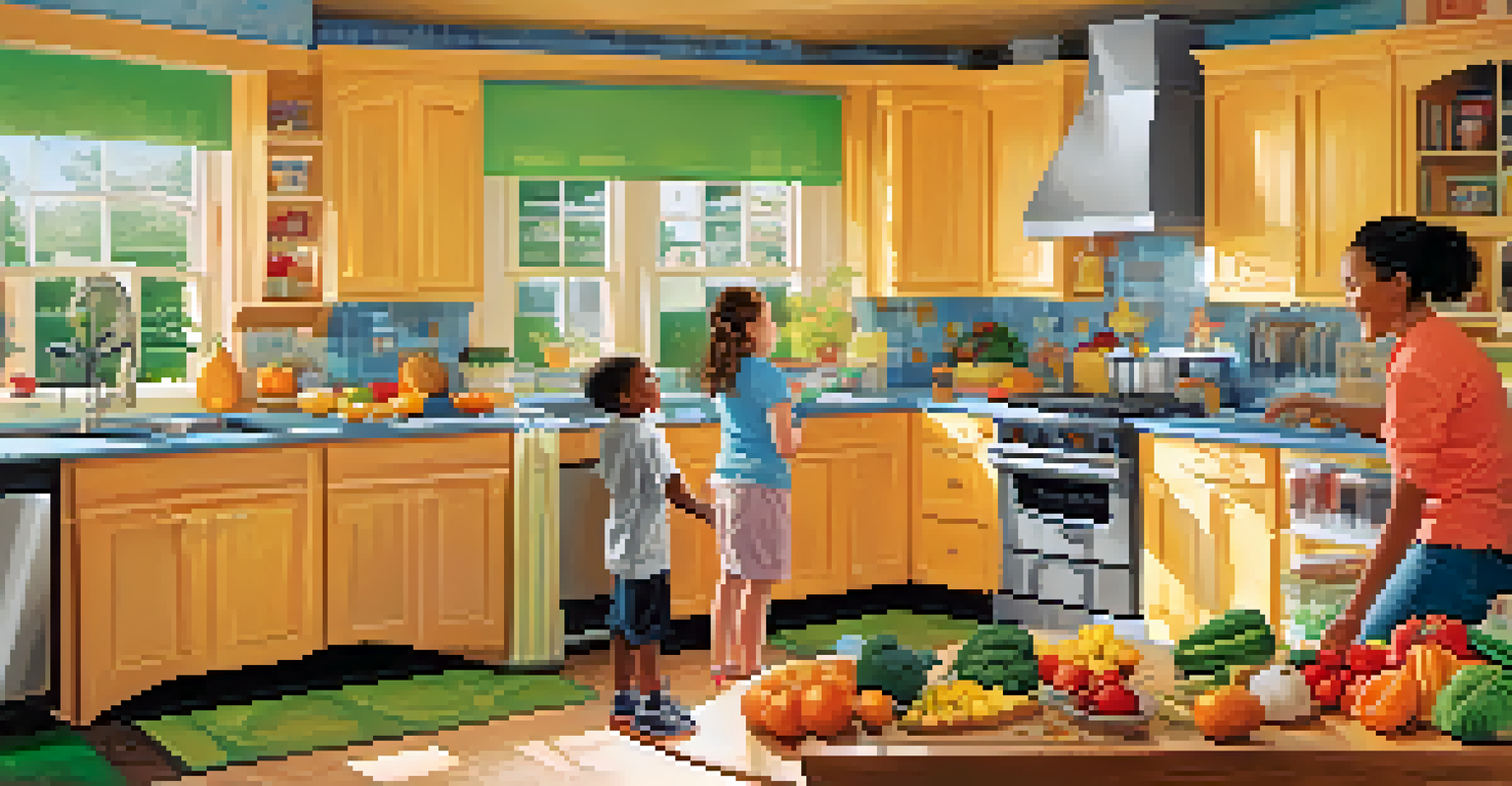Essential Safety Features for Homeowners with Young Kids

Childproofing Your Home: A Must for Safety
Childproofing is the first step to creating a safe environment for your little ones. It involves making adjustments and using various tools to minimize hazards around your home. Simple actions like securing heavy furniture to the wall can prevent tipping and falling, which is crucial for a child’s safety.
Safety isn't just a slogan, it's a way of life.
You might also want to use corner guards on sharp furniture edges and outlet covers to protect curious hands. These small, often inexpensive changes can have a significant impact on preventing accidents. Remember, the goal is to create a safe space where children can explore freely without unnecessary risks.
As you childproof, consider involving your kids in the process. It can be a fun activity, and it teaches them about safety. By making it a family affair, you not only enhance safety but also strengthen your bond with your children.
Secure Your Windows and Doors to Prevent Accidents
Windows and doors are often overlooked when it comes to child safety, yet they pose significant risks. Installing window locks and guards can prevent children from falling out or opening windows on their own. It’s an easy fix that can provide peace of mind to parents.

Additionally, check the strength of your door locks and consider adding a deadbolt for extra security. This is especially important if you live in a busy area where strangers may easily access your home. A sturdy door not only keeps your children safe from outside dangers but also creates a sense of security for your family.
Childproof Your Home for Safety
Making simple adjustments like securing furniture and using outlet covers can significantly reduce hazards for children.
Make it a routine to explain to your children the importance of staying away from windows and doors when unsupervised. Teaching them about these boundaries early on can instill good habits that protect them as they grow.
Safety Gates: A Key Investment for Parents
Safety gates are invaluable for keeping young children away from staircases or specific rooms. They act as a physical barrier, ensuring that your little ones can't wander into potentially dangerous areas unsupervised. Installing gates at both the top and bottom of stairs is essential for added protection.
An ounce of prevention is worth a pound of cure.
When choosing a safety gate, look for options that meet current safety standards. Pressure-mounted gates are great for doorways, while hardware-mounted options are more reliable for the top of stairs. Ensure the gate is tall enough that your child cannot climb over it, keeping them safe and sound.
Involve your children in the process of selecting and using the gates. Explain their purpose so they understand the importance of not trying to climb over or push through them. This not only reinforces safety but also empowers them to be mindful of their surroundings.
Fire Safety: Installing Alarms and Sprinklers
Fire safety should be a top priority for any home, especially with young kids around. Installing smoke detectors on every level of your home, particularly near sleeping areas, can save lives. Ensure you test these alarms monthly and replace batteries at least once a year to keep them functional.
Consider integrating a fire sprinkler system, which can significantly reduce fire-related injuries. While it may seem like a big investment, it can be life-saving in emergencies. Coupled with an escape plan for your family, these measures create a comprehensive fire safety strategy.
Implement Fire and Electrical Safety
Installing smoke detectors, sprinkler systems, and outlet covers are essential steps in preventing accidents and ensuring safety.
It's also essential to educate your children about what to do in case of a fire. Regularly practice your escape plan and explain the sound of smoke detectors. This knowledge empowers them to react calmly and quickly in an emergency.
Electrical Safety: Childproofing Outlets and Cords
Electrical safety is another crucial aspect that requires your attention. Young children are naturally curious and may want to explore outlets and cords. Installing outlet covers can prevent them from inserting objects into sockets and reduce the risk of electrical shocks.
Additionally, securing cords from appliances and electronics out of reach is essential. Use cord organizers or clips to keep them tidy and hidden from tiny hands. This not only minimizes the risk of tripping but also keeps your home looking neat.
Make it a habit to remind your children about the dangers of electricity. Teaching them to respect electric outlets and cords from a young age can foster a sense of safety and awareness that lasts a lifetime.
Outdoor Safety: Fencing and Pool Precautions
If you have a yard or pool, outdoor safety is critical for protecting your kids. Installing a secure fence around your pool can prevent accidental drownings, which are unfortunately common among young children. Ensure the gate is self-closing and self-latching to keep it securely closed when not in use.
For yards, consider adding fencing to keep children away from busy streets or hazardous areas. A tall fence can act as a barrier, allowing your kids to play freely while you maintain peace of mind. Additionally, regularly inspect the fencing for any wear or damage.
Create Emergency Preparedness Plans
Developing a family emergency plan and involving children in drills can enhance their ability to respond effectively to unexpected situations.
Encourage your children to understand the boundaries of safe play areas. You can even create games or activities that take place within these safe spaces, making safety feel less restrictive and more fun.
Creating a Safe Kitchen Environment for Kids
The kitchen is often referred to as the heart of the home, but it can also be a hotspot for accidents. Keeping sharp knives, hot pans, and cleaning supplies out of reach is crucial. Consider using childproof locks on cabinets to deter curious little hands from exploring hazardous items.
Also, invest in stove knob covers to prevent children from accidentally turning on burners. Teaching kids about kitchen safety can be an engaging learning experience, where they understand the potential dangers while helping you cook.

As your children grow, gradually involve them in simple cooking tasks under supervision. This not only fosters a love for cooking but also emphasizes the importance of being safe in the kitchen.
Emergency Preparedness: Planning for the Unexpected
No matter how many safety features you implement, emergencies can happen. Creating an emergency plan with your family is essential for handling unforeseen events. Discuss various scenarios, such as fires or natural disasters, and outline clear steps for everyone to follow.
Keep essential items like a first aid kit, flashlights, and a family emergency contact list in an easily accessible location. Regularly review and update your emergency plan to ensure everyone is aware of their roles and responsibilities.
Involving your children in emergency drills can make a significant difference in how they respond during a real crisis. Teaching them to remain calm and act quickly not only builds confidence but also ensures their safety.